This article needs additional citations for verification .(June 2022) |

Royal Porcelain Factory
Emma Eleonore Meyer (20 August 1859, Flensborg - 8 October 1921, Frederiksberg) was a Danish painter; primarily of landscapes.
This article needs additional citations for verification .(June 2022) |

Emma Eleonore Meyer (20 August 1859, Flensborg - 8 October 1921, Frederiksberg) was a Danish painter; primarily of landscapes.
She was born to Fritz Meyer, a tax assessor, and his wife, Marie Frederikke née Dalberg. She began studying art at the drawing and painting school for women, operated by Emilie Mundt and Marie Luplau. Later, she became a student of Harald Foss and Peder Severin Krøyer. [1]
Most of her landscape motifs are taken from the area around Silkeborg. She also painted flowers and portraits. Her painting of women working at the Royal Porcelain Factory was displayed at the Charlottenborg exhibition of 1895, and purchased by the art association. From 1885 until her death, she held numerous showings at the Kunsthal Charlottenborg. Her painting of women working at the Royal Porcelain Factory was displayed there in 1895, and purchased by the art association. That same year, she participated in the Women's Exhibition, in Copenhagen. [1]
Shortly after, she was awarded a scholarship from the Royal Danish Academy of Fine Arts. She made several short trips abroad and, in 1901, received an incentive award from the Frederik Sødring Endowment. In 1916, she was given a lifetime grant from the Louise Ravn-hansen Fund. [1] Many of her works may be seen at the Vejle Kunstmuseum.

Peter Vilhelm Carl Kyhn was a Danish landscape painter who belonged to the generation of national romantic painters immediately after the Danish Golden Age and before the Modern Breakthrough. Even though he outlived many of his artistic peers by several decades, he remained a traditionalist and expressed strong criticism of many of the new trends in the painting of his day.
Júlíana Sveinsdóttir was one of Iceland's first female painters and textile artists. Taught initially by prominent Icelandic artist Þórarinn B. Þorláksson, Júlíana settled in Denmark and returned to Iceland in the summers, the visits inspiring her landscape paintings, one of which won the Eckersberg Medal in 1947.

Harald Slott-Møller was a Danish painter and ceramist. Together with his wife, the painter Agnes Slott-Møller, he was a founding member of Den Frie Udstilling.

Vilhelmine "Ville" Jais Nielsen was a Danish painter and sculptor. She is remembered for the many portraits of women she painted while in Sweden during the Second World War, marked by strong brushstrokes and sensitive lighting effects. Her husband was the artist Jais Nielsen.
Eva Louise Buus is a Danish artist. A graduate of the Royal Danish Academy of Fine Arts, she has exhibited in Denmark, Germany and Greenland. Her landscapes are principally concerned with the effects of light and darkness on the appearance of her images. In 2015, she exhibited works in Fanø Museum which she had created by subjecting plates of copper to the effects of various acids, inspired by the landscapes of the Swedish painter Carl Johan Forsberg. More recently her metallic works have drawn on his recently rediscovered watercolours of women.

Suzette Catherine Holten was a Danish painter and ceramist who belonged to the Skovgaard family of artists. In addition to landscapes, flower paintings and portraits, she created and decorated ceramics and also worked as an embroiderer. As a woman, she was unable to achieve the same level of acclaim as her father or brothers.
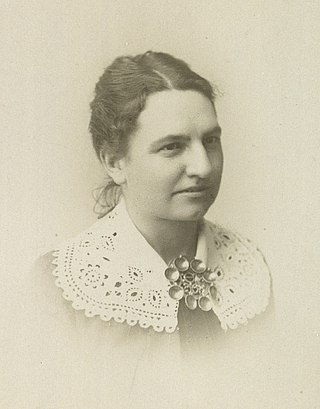
Louise Christiane Ravn-Hansen was a Danish landscape painter and etcher.

Bertha Nicoline Tuxen was a Danish painter of still lifes, flowers, and portraits.

Eleonora Christine Tscherning (1817–1890) was a Danish painter who created flower paintings and later landscapes, often working in the open air. She is also remembered as one of the most important memoirists of her day, writing letters and diaries documenting important events, including the career of her husband, Anton Frederik Tscherning (1795–1874) who served as a member of Parliament and the Council of State as well as Defence Minister.
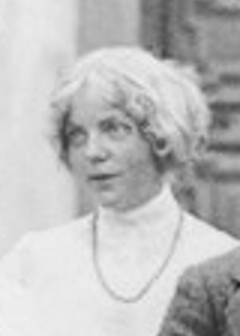
Anne Marie Frederikke Telmányi née Nielsen (1893–1983) was a Danish painter and writer. In addition to landscapes and mythological subjects, she is remembered in particular for her portraits of important figures of the times. Her writings include a biography of her mother, Anne Marie Carl-Nielsen, who was also an artist. Her father was the composer Carl Nielsen and her husband was the Hungarian violinist Emil Telmányi.

The Women's Exhibition from the Past and Present held in Copenhagen in 1895 was an art and culture exhibition for women from the Nordic countries. Inspired by the 1893 World's Fair in Chicago, it was designed to demonstrate how far Nordic women had advanced in the areas of education, employment and art. The first of its kind in Europe, it was considered a great success.
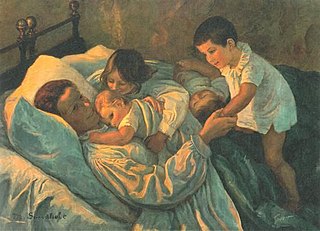
Anna Marie Louise Sandholt (1872–1942) was a Danish painter and ceramist who practised outdoor painting at a time when it was unusual for women to do so. Before studying painting, she had been active as an embroidery teacher. As a ceramist, she created porcelain figures for Bing & Grøndahl. Many of her landscapes depicted trees, with which she developed a special relationship after the First World War.
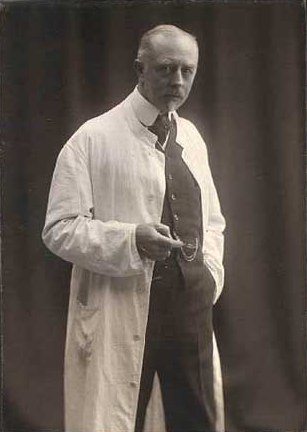
Arnold Krog was a Danish architect, painter and designer who is remembered for his achievements as artistic director of Royal Copenhagen from 1884 to 1916. He revived the company after a period of decline, moving away from the stiff Empire style of previous decades in favour of a more Impressionist style which combined underglaze painting techniques with inspiration from Japanese imagery and European naturalism. He designed the Polar Bear Fountain for the Peace Palace in The Hague. He has also designed furniture and silverware and took up landscape painting after his retirement from the porcelain factory in 1916.

Anthonie Eleonore Christensen, generally known as Anthonore Christensen, née Tscherning (1849–1926) was a Danish flower painter. She exhibited from 1867 at Charlottenborg, winning the medal of the year in 1893. As a painting teacher, her students included Queen Louise and Queen Olga of Greece.

Emma Augusta Thomsen was a Danish flower painter

Marie Vilhelmine Bang, commonly known as Ville Bang, (1848–1932) was a Danish painter of portraits, landscapes and genre works. In 1888, together with 22 other women, she presented a petition to the parliament, calling for the Art Academy to be expanded to admit women. It led to the establishment of Kunstakademiets Kunstskole for Kvinder where in October 1888 she was one of the first students. Together with Augusta Paulli, she later opened an art school to prepare women for the Academy.

Helvig Agnete Kinch née Amsinck (1872–1956) was a Danish artist who specialized in painting animals, especially horses. In the early 20th-century, she participated in archaeological research near Lindos on the island of Rhodes, creating landscapes of the area and illustrating the artefacts discovered there. Together with Marie Henriques, in 1916 she established the Danish Society of Female Artists to encourage women artists to exhibit their works.
Elisabeth Neckelmann (1884–1956) was a Danish painter. Her early associations with the Funen Painters influenced her work which consisted mainly of flower paintings and landscapes but also included portraits. From 1924 to 1954, she headed the Danish Society of Female Artists where she helped women to become professional artists on the same basis as their male counterparts. She was a member of various art exhibition selection committees, including that for Charlottenborg.
Olga Rosalie Aloisa Wagner née Packness (1873–1963) was a Danish painter and sculptor. After specializing in painting at the Royal Danish Academy of Fine Arts, she was trained as a sculptor by her husband Siegfried. She worked together with him throughout her life, developing her own style. She is remembered for her large stone and bronze figures but also created smaller works in porcelain while working with Bing & Grøndahl and the Royal Danish Porcelain Factory.
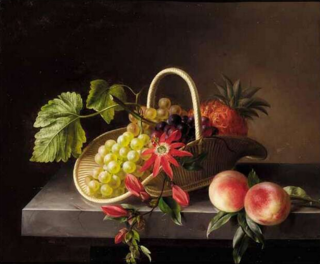
Johanne (Hanne) Hellesen (1801–1844) was a Danish painter who was trained privately under Johan Laurentz Jensen as women had not yet been admitted to the Royal Danish Academy. She is recognized as one of the most successful female flower painters of her times. Some of her works were purchased by the Danish Royal Collection of Paintings, two for Kronborg and two for Fredensborg Palace. Others are in the collection of Statens Museum for Kunst.